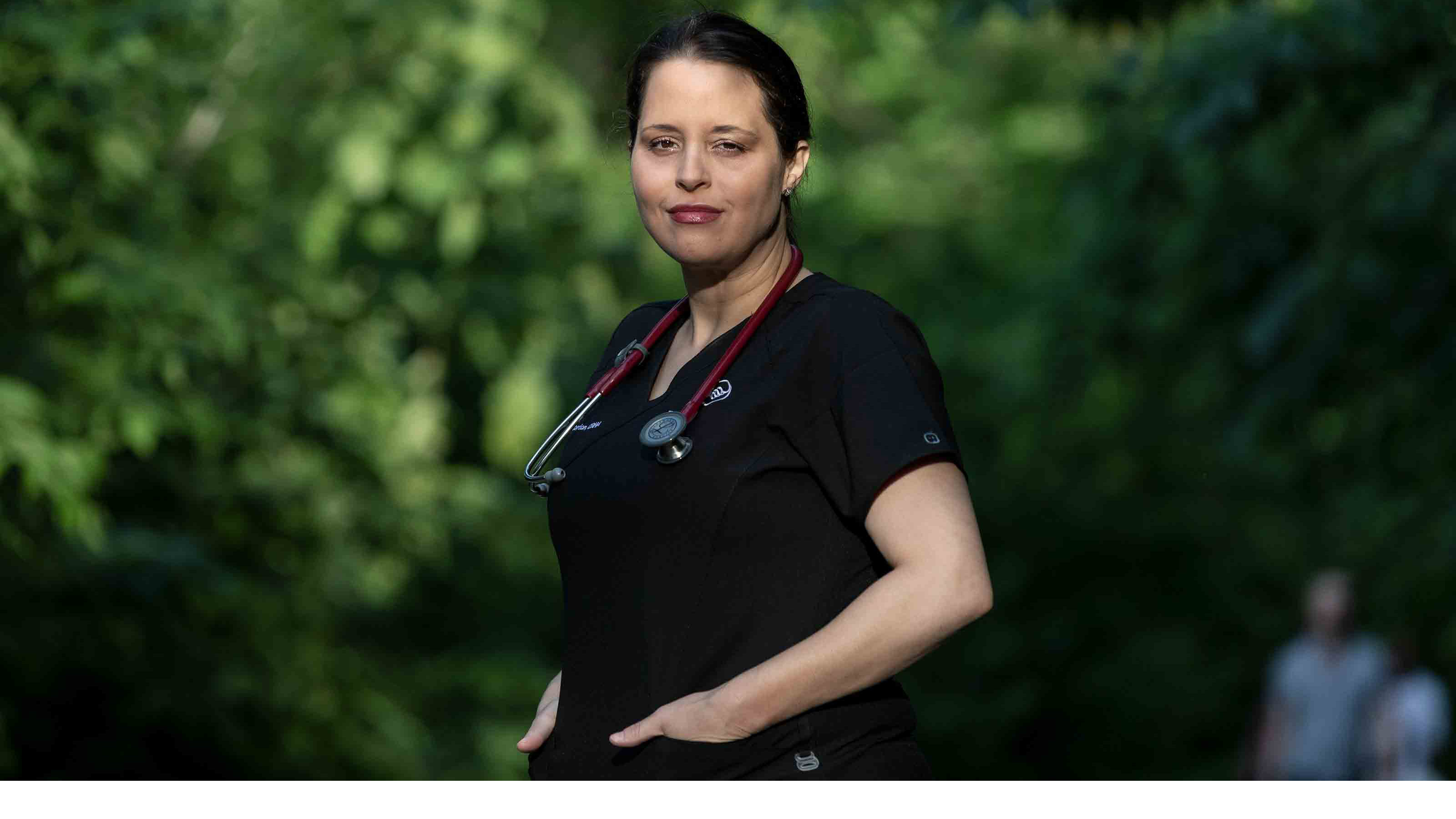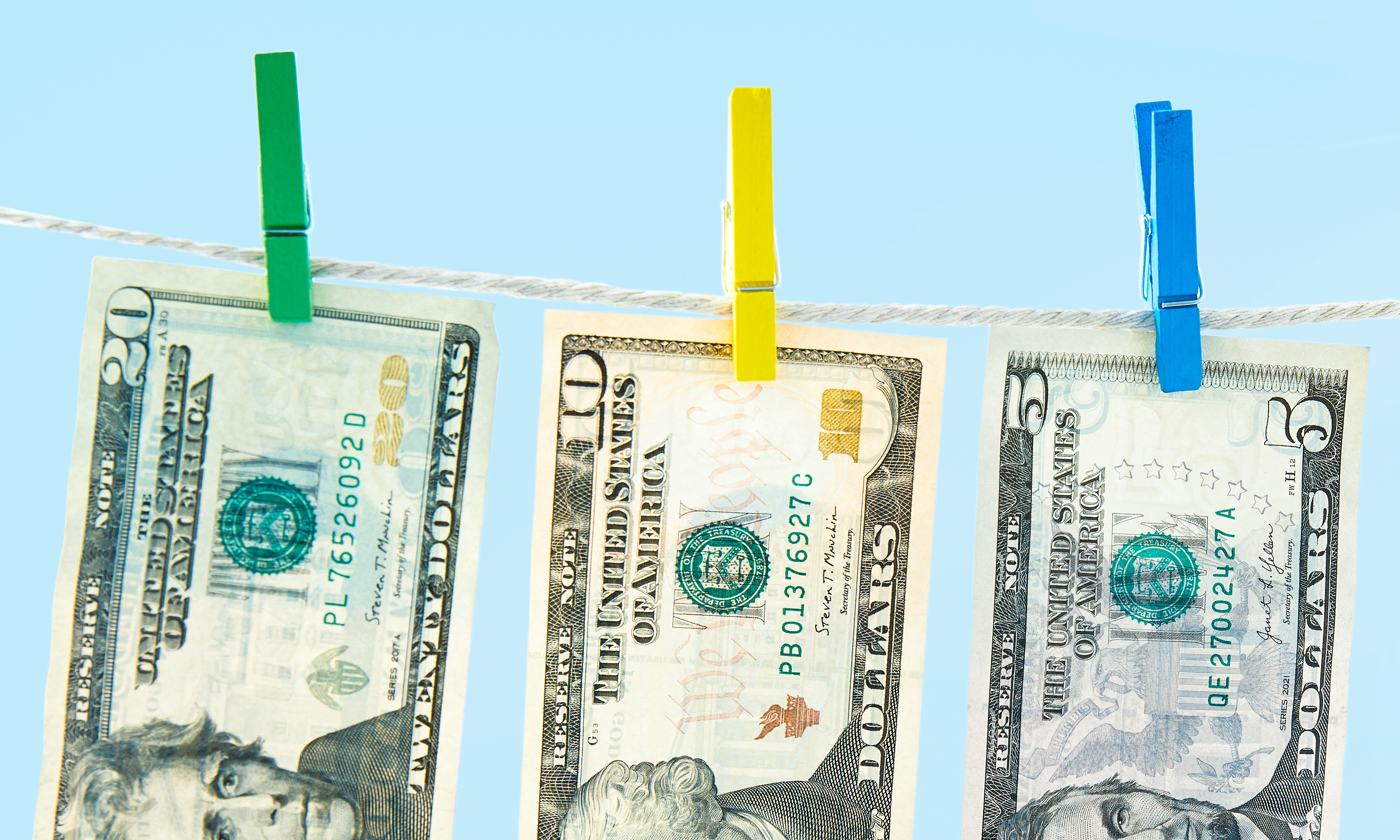Nursing in the Time of COVID
This health care professional warns that the pandemic will worsen the nursing shortage.


Leah Gordon, 43, lives in Hugo, Minn., and directs the nurse anesthetist program at St. Mary's University of Minnesota. Kiplinger's talked to her about the challenges created by COVID 19 for nurse anesthetists and the problem student nurses--and the health care industry—are facing because they can't complete their bedside clinicals.
What does a nurse anesthetist do? When you heard about patients with COVID getting breathing tubes, it was primarily nurse anesthetists manning those intensive care units, placing the lines to give the medications and putting the breathing tubes between the vocal cords into their lungs.
How has the pandemic affected your job? My full-time job is as a professor and the nurse anesthetist program director at St. Mary’s University of Minnesota. I did work one day a week at an outpatient gastroenterology center. In order to be a really good instructor, it’s important to keep my skills fresh.
From just $107.88 $24.99 for Kiplinger Personal Finance
Become a smarter, better informed investor. Subscribe from just $107.88 $24.99, plus get up to 4 Special Issues

Sign up for Kiplinger’s Free Newsletters
Profit and prosper with the best of expert advice on investing, taxes, retirement, personal finance and more - straight to your e-mail.
Profit and prosper with the best of expert advice - straight to your e-mail.
Your side gig is on hold? When COVID hit, the first thing our governor did was suspend elective surgeries. Plus, they wanted all the personal protective equipment brought to a central location. That meant we couldn’t do any cases because we couldn’t use our gowns, we couldn’t use our shields and we couldn’t use our masks.
You must have taken a financial hit. A nurse anesthetist out of school right now is earning $180,000 to $190,000. I feel like a jerk even talking about it because I’m very, very fortunate, but when you lose that side hustle, all of a sudden $50,000 is gone. I earn too much as a professor to qualify for unemployment. But I have a $1,900-a-month student loan payment, and to not have my side job right now is challenging—and I’m not sure if I’m going to get it back.
What about the rest of your family? My partner is a registered nurse who works for the same surgery center—that’s how we met. He was furloughed for a few months, but now he’s back at work.
Will your students be able to graduate? We’re still figuring it out. Right now, most classes are online, and it’s really hard to learn a medical specialty at your house. You have to be able to do lab work and learn skills with your instructor side by side with you. We don’t really have simulation capability to teach our students how to put in an epidural or a spinal. At a minimum, our students have to complete 2,000 hours of bedside care, and our program is only 2 1/2 years long. We’re talking about whether we’re going to add a semester and try to create some credits for them so they can qualify for student loans.
Do you think COVID will affect the health care system longer term? I’m very concerned about everybody being able to get to the bedside and through their training. If you look at the nursing shortage in the country right now—which is only projected to get bigger—to not have nurses getting their clinicals, we’re going to have some workforce issues.
Profit and prosper with the best of Kiplinger's advice on investing, taxes, retirement, personal finance and much more. Delivered daily. Enter your email in the box and click Sign Me Up.

Mark was the editor of Kiplinger's Personal Finance magazine from July 2017 to June 2023. Prior to becoming editor, he was the Money and Living sections editor and, before that, the automotive writer. He has also been editor of Kiplinger.com as well as the magazine's managing editor, assistant managing editor and chief copy editor. Mark has also served as president of the Washington Automotive Press Association. In 1990 he was nominated for a National Magazine Award. Mark earned a B.A. from University of Virginia and an M.A. in Writing from Johns Hopkins University. Mark lives in Washington, D.C., with his wife, and they spend as much time as possible in their Glen Arbor, Mich., vacation home.
-
 Small Caps Can Only Lead Stocks So High: Stock Market Today
Small Caps Can Only Lead Stocks So High: Stock Market TodayThe main U.S. equity indexes were down for the week, but small-cap stocks look as healthy as they ever have.
-
 Ask the Editor: Tips for Filing Your 1040
Ask the Editor: Tips for Filing Your 1040Ask the Editor In this week's Ask the Editor Q&A, Joy Taylor answers questions on preparing and filing your 2025 Form 1040.
-
 Is Direct Primary Care Right for Your Health Needs?
Is Direct Primary Care Right for Your Health Needs?With the direct primary care model, you pay a membership fee for more personalized medical services.
-
 9 Types of Insurance You Probably Don't Need
9 Types of Insurance You Probably Don't NeedFinancial Planning If you're paying for these types of insurance, you may be wasting your money. Here's what you need to know.
-
 Money for Your Kids? Three Ways Trump's ‘Big Beautiful Bill’ Impacts Your Child's Finances
Money for Your Kids? Three Ways Trump's ‘Big Beautiful Bill’ Impacts Your Child's FinancesTax Tips The Trump tax bill could help your child with future education and homebuying costs. Here’s how.
-
 Key 2025 Tax Changes for Parents in Trump's Megabill
Key 2025 Tax Changes for Parents in Trump's MegabillTax Changes Are you a parent? The so-called ‘One Big Beautiful Bill’ (OBBB) impacts several key tax incentives that can affect your family this year and beyond.
-
 Amazon Resale: Where Amazon Prime Returns Become Your Online Bargains
Amazon Resale: Where Amazon Prime Returns Become Your Online BargainsFeature Amazon Resale products may have some imperfections, but that often leads to wildly discounted prices.
-
 What Does Medicare Not Cover? Eight Things You Should Know
What Does Medicare Not Cover? Eight Things You Should KnowMedicare Part A and Part B leave gaps in your healthcare coverage. But Medicare Advantage has problems, too.
-
 QCD Limit, Rules, and How to Lower Your 2026 Taxable Income
QCD Limit, Rules, and How to Lower Your 2026 Taxable IncomeTax Breaks A QCD can reduce your tax bill in retirement while meeting charitable giving goals. Here’s how.
-
 Roth IRA Contribution Limits for 2026
Roth IRA Contribution Limits for 2026Roth IRAs Roth IRAs allow you to save for retirement with after-tax dollars while you're working, and then withdraw those contributions and earnings tax-free when you retire. Here's a look at 2026 limits and income-based phaseouts.
-
 Four Tips for Renting Out Your Home on Airbnb
Four Tips for Renting Out Your Home on Airbnbreal estate Here's what you should know before listing your home on Airbnb.